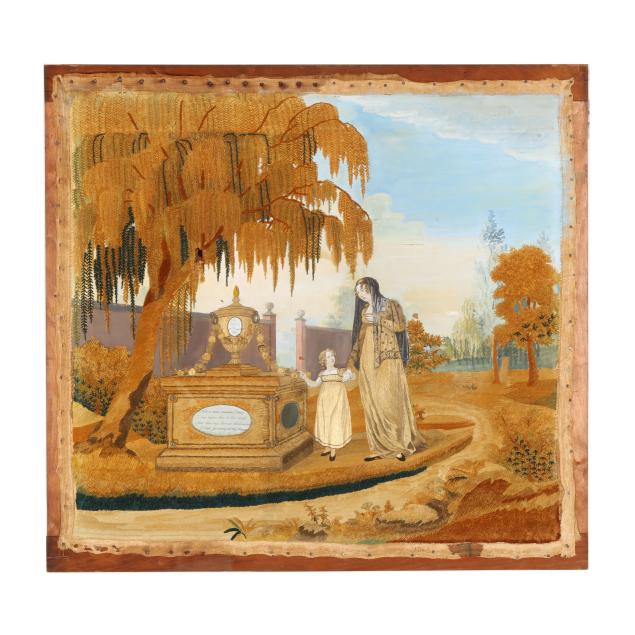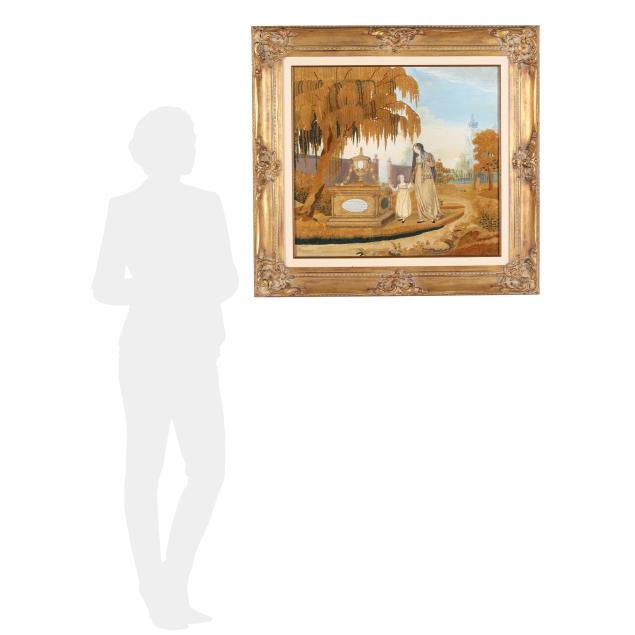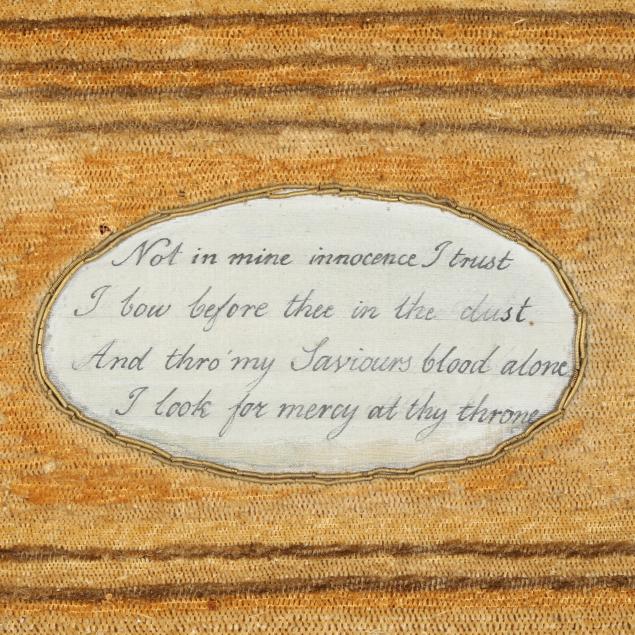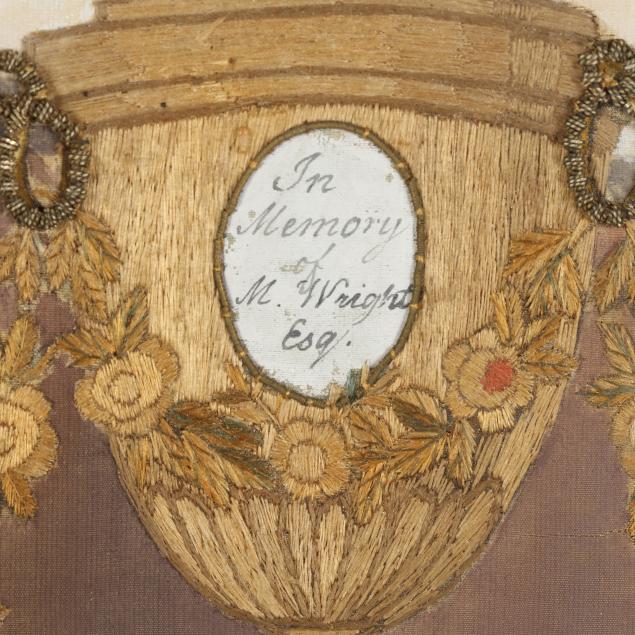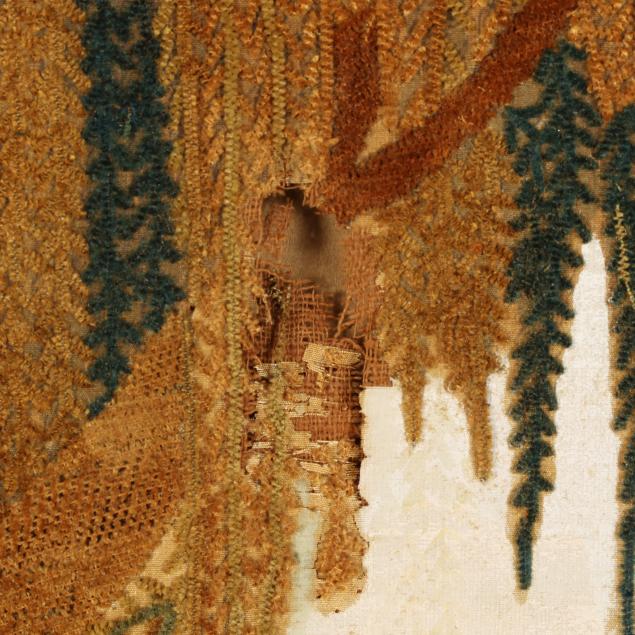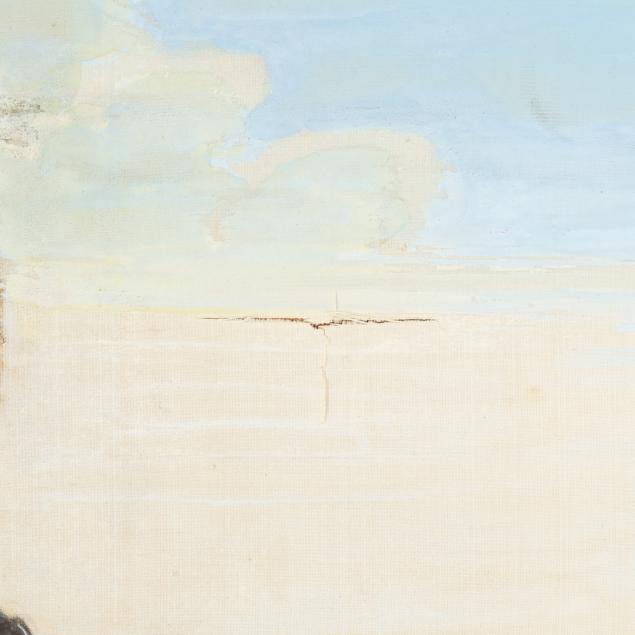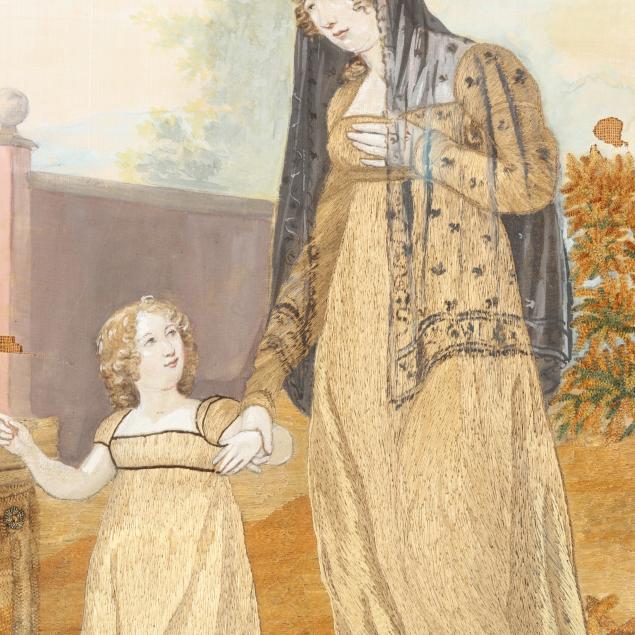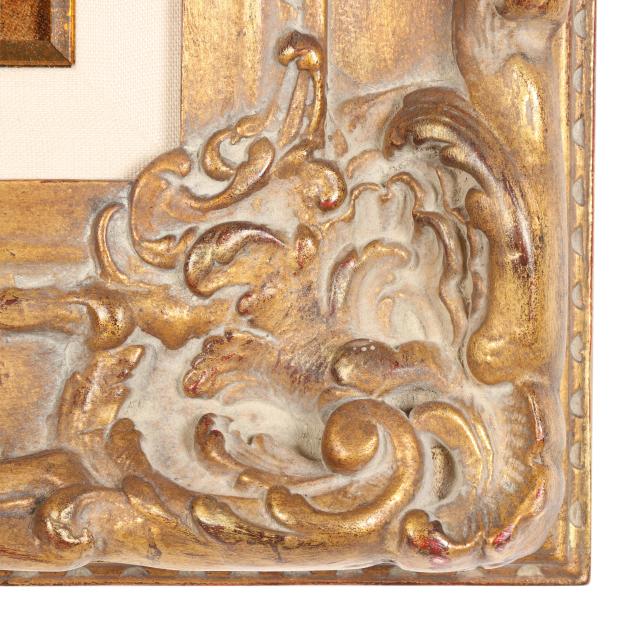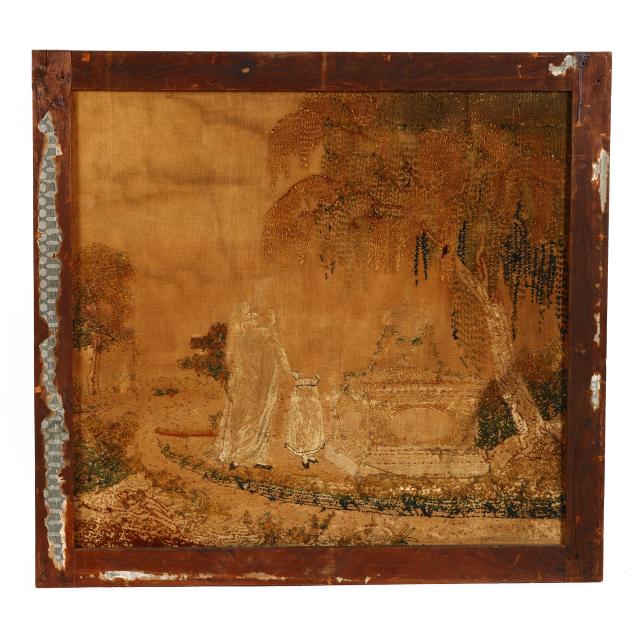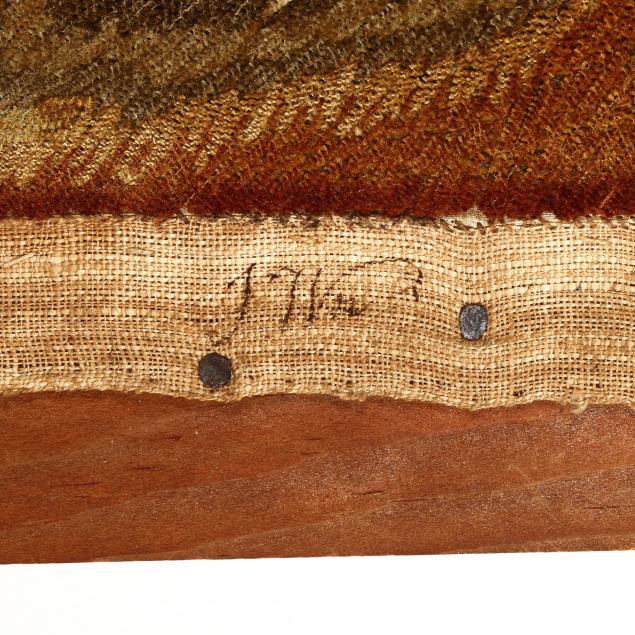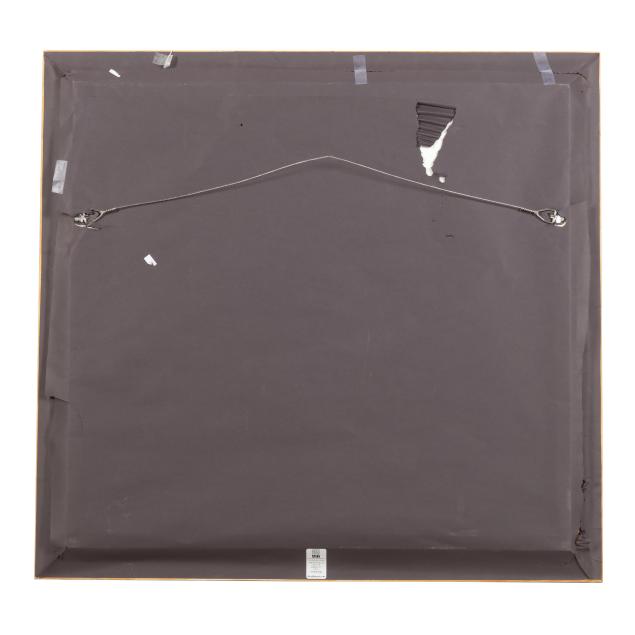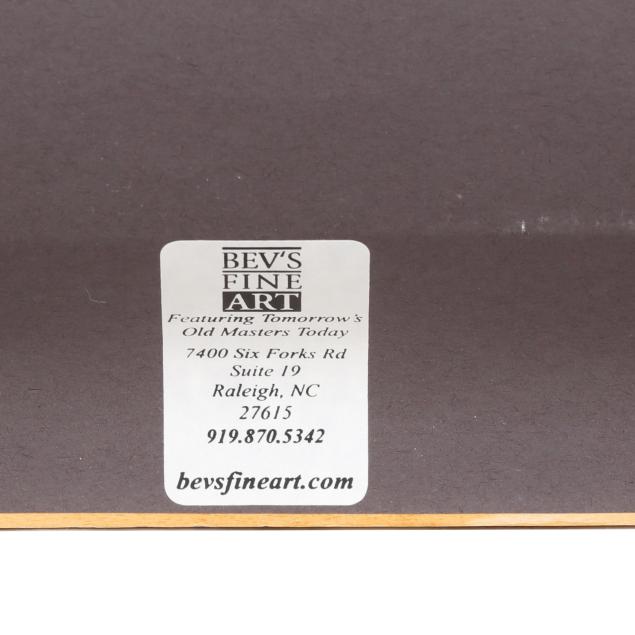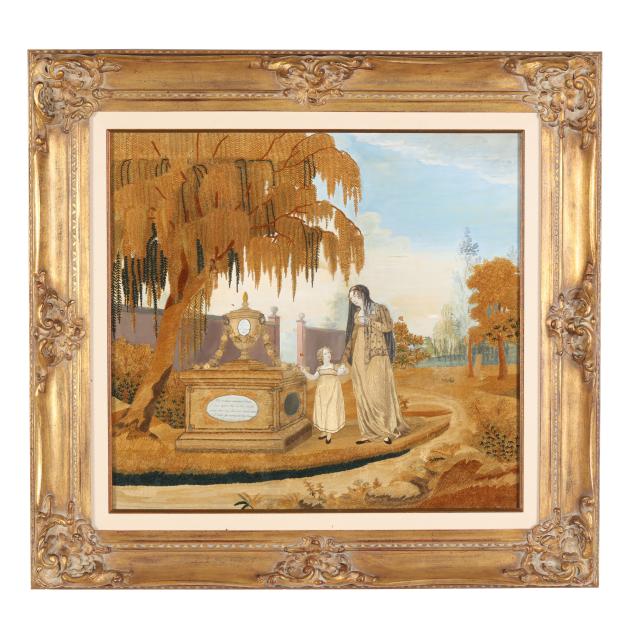
Lot 3080
Antique Mourning Needlework for M. Wright Esq.
Explore more items like this one.
Visit our Rugs & Textiles Department Rugs & Textiles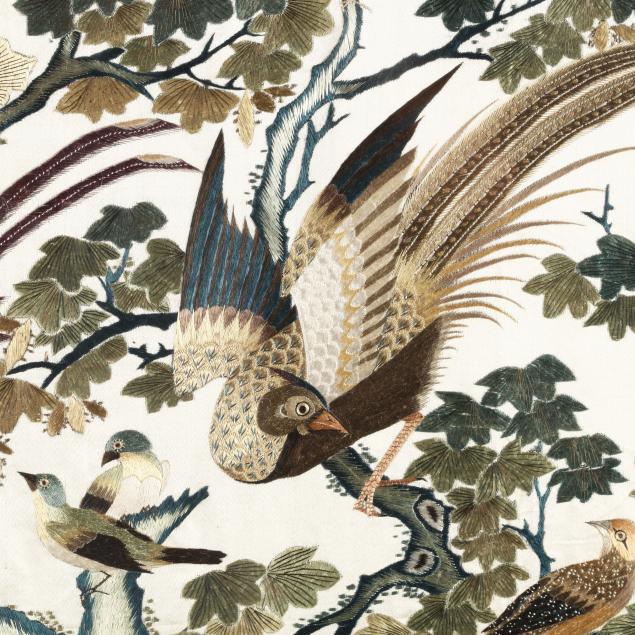
Lot Details & Additional Photographs
Sight size 23 x 25 in.; Frame dimensions 33 3/4 x 35 3/4 in.
The death of George Washington in 1799 gave rise to a number of mourning or memorial embroideries in honor of the first president. This led to the popularity of embroidered mourning or memorial works dedicated to departed family members, as they became an important way to express grief and remembrance.
The M. Wright, Esq. remembered through this piece could refer to Moorhead Wright (1808-1857). He was born in Bladen County, North Carolina and died on his way from Red River to Little Rock, Arkansas in 1857. The woman and child depicted could be likenesses of his wife Elizabeth Rebecca Fulton Wright (1821-1894) and eldest daughter, Elizabeth Moorhead Wright Dickinson (1849-1925).
His gravesite in Mount Holly Cemetery (Little Rock, Arkansas) is similar in style to the one depicted with an urn pediment draped in a laurel swag, but with some notable differences in style and height to the actual gravesite monument. The cemetery entrance in the background also resembles that of Mount Holly with ball finials atop the flanking brick columns.
If this is a late example of mourning embroidery from the mid-19th century, then the dress worn by the mourning woman and child point towards an earlier style of the Regency period. While this could signify the death of another M. Wright Esq. entirely, the artist could have also chosen to dress the women in such a way that pays homage to early mourning embroidery from the turn of the 19th century.
Several holes and losses to the textile, light areas of paint retouching; later framing.
